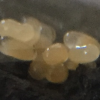Solenopsis invicta and Linepithema humile probably will both probably remain at their current invasive state. The only positive method of control might be the native ants like Prenolepis (these ants are active over the winter and dormant in the summer, and they are sometimes known to wipe out invasive ants in their "sleep").
This is probably the "best" strategy. However, in areas heavily infested with (Argentine ants) it doesn't work as well.
However I introduced Monomorium ergatogyna (pretty much exactly same as Monomorium minimum, the Little Black Ant on the east coast) into the apartment complex and they completely removed Argentine ants out of many areas. They are native, pretty tiny and do really well at removing invasive ants from locations. Their colonies get pretty huge. In areas heavily infested with Argentine ants, they do lower their numbers but probably wouldn't be able to tell the difference unless you watched the Argentine ant population from the beginning.
There were also Monomorium ergatogyna in the last place I lived in, that were already there. They actually went in and invaded smaller Argentine ant colonies and dominated an entire hillside and controlled the whole "block". They even killed a lot of Solenopsis invicta that was on the hillside too, but I never saw them attack an actual nest, just workers.
I'm sure there must be more than just M. ergatogyna and Prenolepis that can drive out invasive ants or lower their populations. But, its probably kinda rare for an ant to be able to do that...that is also native.



















